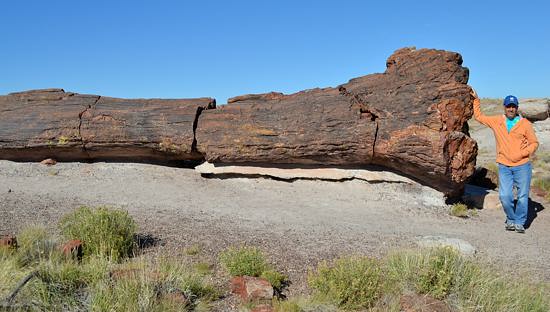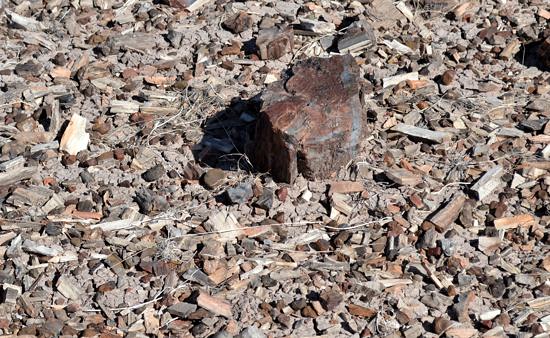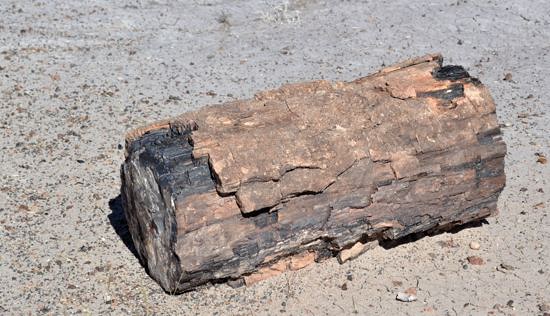
When you think of a forest, most of the time you would think of trees standing up straight, wouldn’t you? At least that’s what I thought when I was a kid some 45 years ago when our family visited the Petrified Forest National Park the first time. This time when Jean and I visited the park I was expecting to see a few pieces of petrified wood strewn about (my memory is foggy from 45 years ago), but to my surprise, some parts of the park are literally covered with fallen petrified trees, tree fragments and what you might call petrified mulch.
Wood chips? Mulch? Actually, there isn’t a single piece of wood in this photograph, it is all rocks.

As you drive the remote road from Holbrook or Winslow Arizona to the south entrance of the Petrified Forest / Painted Desert National Parks (they share the same park area) the only petrified wood you see is in landscape businesses and tourist shops (petrified wood is very expensive by the way) and almost none out in the wild so to speak. That being the case, I wasn’t expecting to see much of these special kind of trees once we got to the park. Boy, was I wrong. While much of the trees turned to rock have been cleared from the land surrounding the park, it is incredibly abundant within the boundaries of the park. While driving from the main entrance to the visitors center, the landscape is absolutely littered with petrified wood in some places and once you get to the visitors center there is what appears to be a fallen forest of it along a mile or so hike directly behind the main building.
Some places in the park you visit you will be see thousands of rocks and will be walking on thousands of pieces of petrified wood that can only be described, as mentioned earlier, as petrified mulch but, don’t even think about picking up a piece of it and putting it in your pocket or car. Upon entering the park you are given a stern warning not to take anything (and that means ann-eee-thing!) from the park boundaries. In fact, if you have any rocks or petrified wood you have purchased or picked up when visiting the Southwest, you must declare them to the rangers so they can either mark them or bag them, otherwise you can face a $20,000 fine and 10 years in jail as a maximum penalty. We had a couple of rocks we picked up in Sedona and Colorado Springs that had to be marked, one of which didn’t even remotely resemble petrified wood, but we (that includes the park ranger) thought it better to be on the safe side. They can inspect your car when you leave the park, so don’t ruin your vacation by even absent mindedly picking up something you shouldn’t.
A burned log? No, once again, it is solid rock.

Plan to visit the park for most of the day because it also includes the Painted Desert (which we will write about in an upcoming post) and it is a 28 mile drive from one end of the park to the other with several stops to check out along the way. You will be fascinated by the history, geology, whole petrified trees, sights, mountain vistas, Indian ruins and petroglyphs, animal life and more from this great American treasure. While petrified wood can be found all over the world and even in all 50 United States, Petrified Forest National Park has the largest concentration of it anywhere in the world. You will be amazed by what you see.
Tags: National Parks

[…] in, then you have yet to experience the Painted Desert. The Painted Desert is part of the larger Petrified Forest National Park and has its own entrance on the north side of the National Park area located right on Interstate 40 […]
[…] Room (Excellent and lunch is very reasonable), The Falcon (mediocre) Visit: Grand Canyon Railway, Petrified Forest National Park and the Painted Desert, star gazing at Clear Creek, Meteor Crater, historic downtown […]